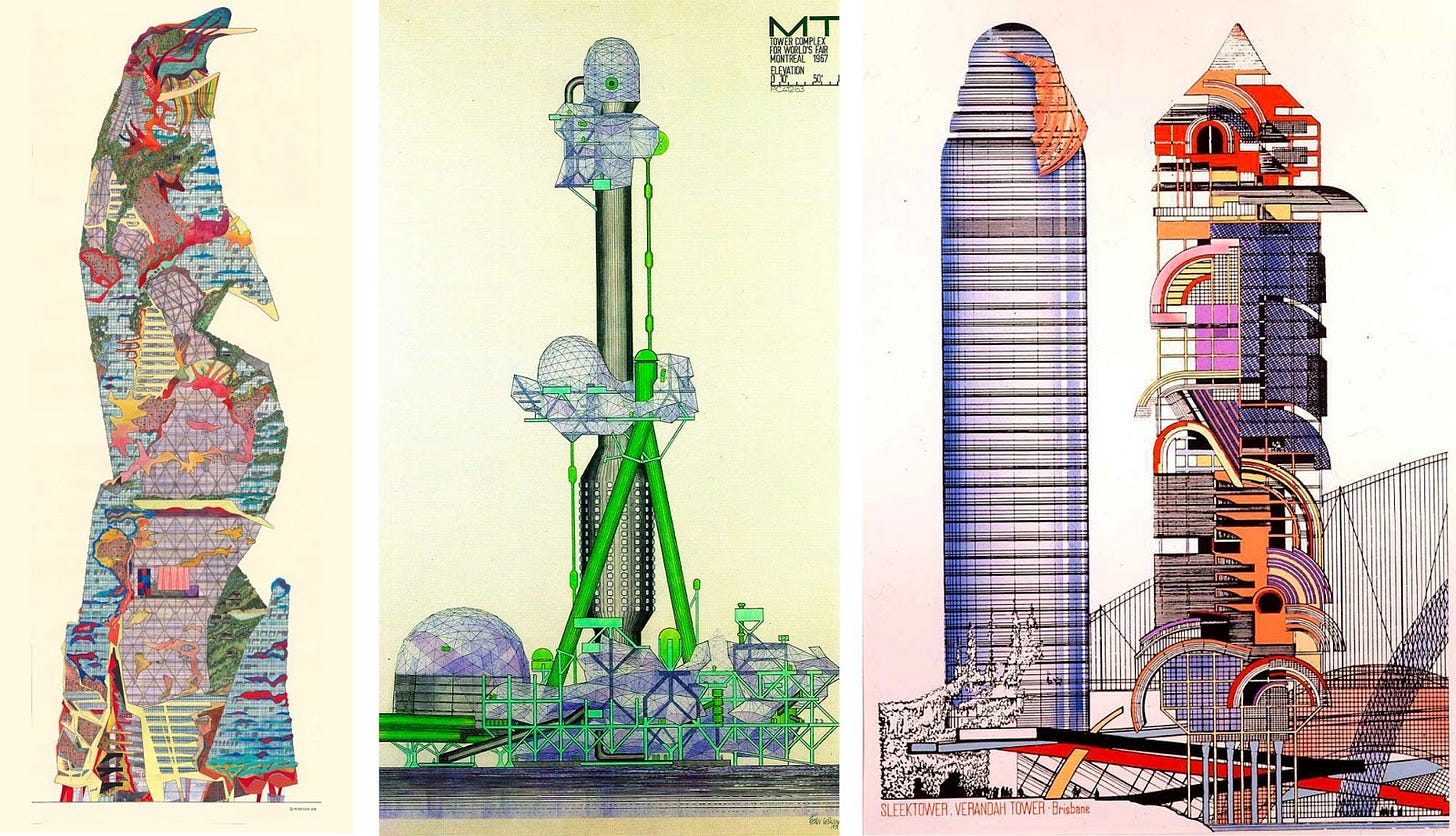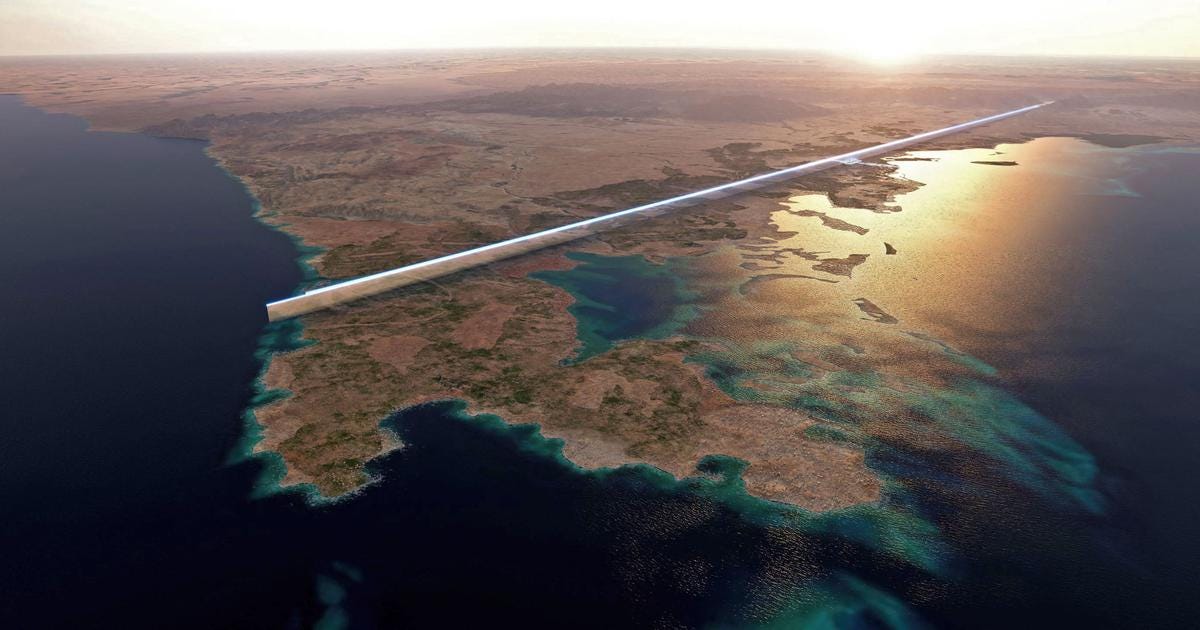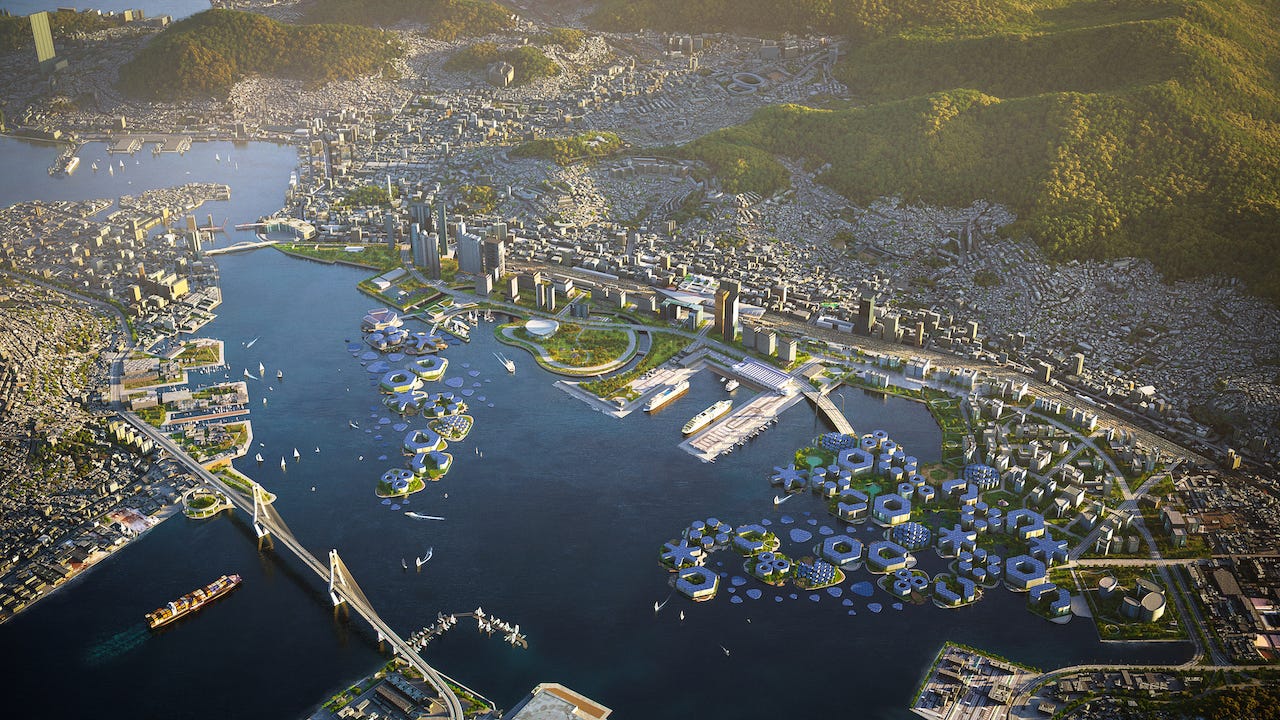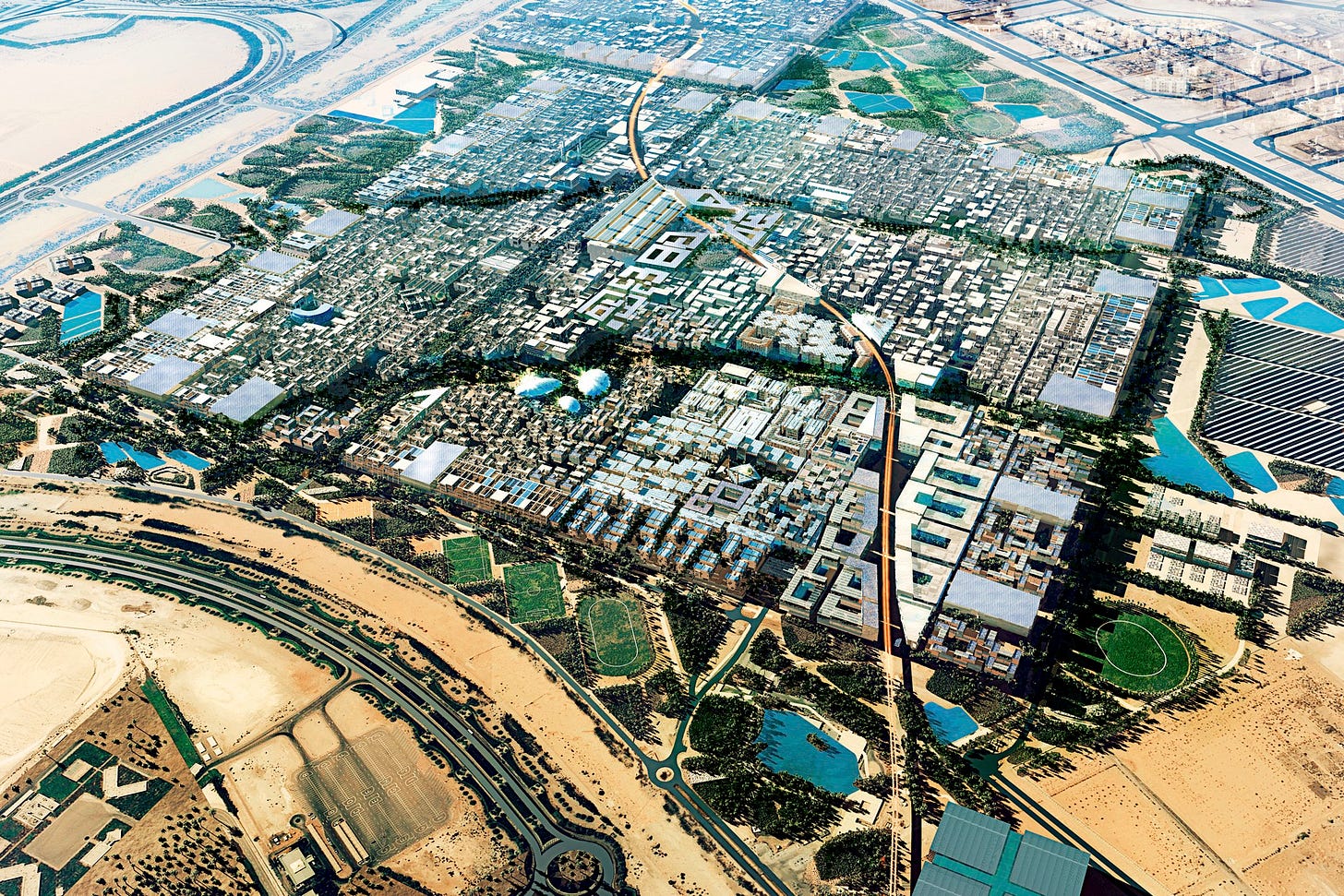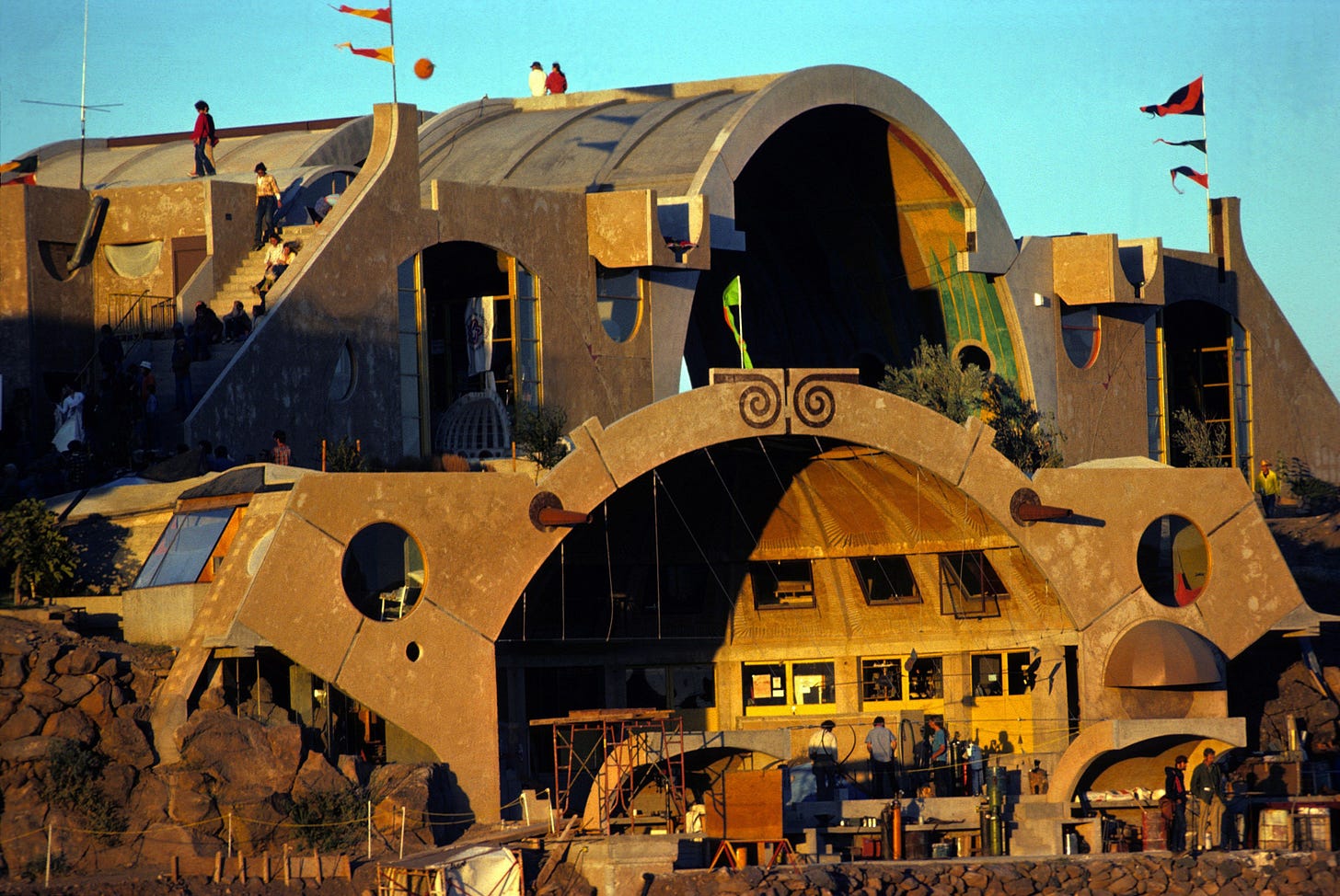Artistically and in terms of design, all of these model cities expand the spectrum of contemporary urbanity and challenge traditional city planning. Yet while small‑scale prototypes such as Arcosanti or portions of Masdar City already demonstrate initial effects, the complete transformation of entire metropolises, whether built in desert or at sea—remains mired in cost, resource, and social complexity.
Telosa is aesthetically ambitious and socially utopian; its viability nevertheless depends crucially on pragmatic planning, stable financing, and genuine community engagement.
Master planner & architect: Bjarke Ingels Group (BIG) in collaboration with Marc Lore’s Terranet – the Equitism Tower and much of the public realm are being developed by BIG Studios.
Only integrated, interdisciplinary concepts that unite art, climate science, sociology, and economics can ultimately realize the visions of a “city of the future,” for the very idea of entirely new cities as societal and ecological experimental grounds is more potent today than ever.
Telosa, a project by U.S. billionaire Marc Lore, promises sustainability, social equity, and high tech across 150,000 hectares of desert—and aims to welcome its first 50,000 residents by 2030.
Comparable ambitions can be found worldwide in Neom (Saudi Arabia), Oceanix Busan (South Korea), Masdar City (UAE), and Songdo (South Korea).
If we compare their core design principles, analyze parallels, and relate them to climate‑protection strategies and practical feasibility, we can outline the following:
Concept and Artistic Framing
Telosa draws on the Greek ideals of telos (“highest purpose”).
• Architecture: futuristic high‑rises with integrated green spaces and greenhouses
• Mobility: pedestrian zones, bike networks, autonomous electric car system
• Energy: 100 % renewable via solar panels, wind turbines, water treatment
• Social model: nonprofit trust in lieu of private ownership, participatory democracy
Artistically, Telosa is inspired by ecological cityscapes and the utopian architectural visions of the 1960s (e.g., Archigram), reviving motifs of “green skyscrapers.”
Neom (Saudi Arabia)
Concept & urban design: NEOM Company (the Saudi‑backed development corporation) together with a consortium of consultants; principal architectural concept by Adrian Smith + Gordon Gill Architecture for initial tower prototypes.
– Length: planned “The Line” up to 170 km of purely walkable city.
– Focus: carbon negativity, AI‑driven management, desert greening.
– Criticism: staggering cost (US $500 billion), ecological risks to local ecosystems.
Oceanix Busan (South Korea)
Master plan & floating‑city design: Bjarke Ingels Group (BIG) in partnership with Oceanix, UN‑Habitat, and Kansas State University’s engineering team.
– Floating modular blocks, scalable, resilient to sea‑level rise.
– Energy autonomy via tidal and solar generation; closed‑loop water management.
– Challenge: long‑term durability of open‑sea platforms.
Masdar City (Abu Dhabi, UAE)
Master plan: Foster + Partners (Sir Norman Foster’s studio) designed the original layout and early buildings; contemporary infill by a range of regional architects under the Masdar Urban Development team.
– Planned carbon neutrality, founded 2006; only 20 % built to date.
– Traditional wind towers (barjeel) combined with modern architecture, dense pedestrian streets.
– Flood and heat resilience through shading and passive cooling.
Songdo International Business District (South Korea)
Master plan: Kohn Pedersen Fox Associates (KPF) in collaboration with Gale International and POSCO Engineering & Construction.
– Smart‑city infrastructure: drainage canals, automated waste collection.
– 40 % complete after 15 years; high real‑estate prices hinder diversity.
Arcosanti (Arizona, USA)
Designer & founder: Paolo Soleri—Arcosanti is the lifelong work of architect‑theorist Soleri and the Cosanti Foundation, built according to his “arcology” principles.
– Architectural experiment since 1970 by Paolo Soleri; compact layout, passive solar design.
– Never finished, but serves as a model for ecological small‑scale urbanism.
Artistic‑Aesthetic and Climate‑Specific Strategies
All projects share the aim of deploying architecture as an art form in service of ecological and social goals. Telosa and Neom stage vertical urban panoramas as monuments of a new civilization; Masdar and Arcosanti rely more on low‑rise, traditionally climate‑adaptive elements (wind towers, passive cooling). Oceanix broadens the aesthetic spectrum into the maritime realm, while Songdo reveals the intersection of high tech and urban living.
Feasibility in the Context of Climate Change
– Resource use: massive terraforming (Telosa, Neom) conflicts with prudent land and water stewardship.
– Energy: solar and wind systems are proven technology, but storage and grid stability in desert or offshore settings remain expensive.
– Social cohesion: nonprofit trust models (Telosa) versus commercial development (Songdo) determine diversity and civic participation.
– Budget risk: Telosa (US $400 billion) and Neom (US $500 billion) rely on private funding whose long‑term sustainability is uncertain. Masdar shows that even state‑backed megaprojects can stall.
KB
Sources
https://cityoftelosa.com/2021/10/17/usatoday/
Neom (Wikipedia): https://en.wikipedia.org/wiki/Neom
Oceanix Busan (HUDUN): https://oceanixbusan.com/
Masdar City (Wikipedia): https://en.wikipedia.org/wiki/Masdar_City
Songdo IBD (Wikipedia): https://en.wikipedia.org/wiki/Songdo_International_Business_District
Arcosanti (Official): https://www.arcosanti.org/
Telosa (Travelbook‑Artikel): https://www.travelbook.de/ziele/telosa-stadt-der-zukunft









